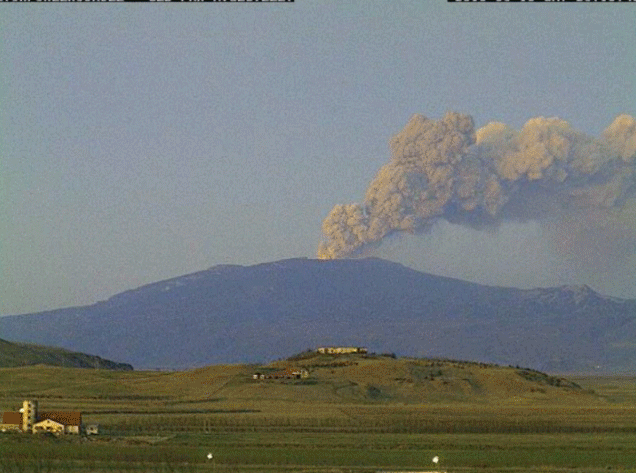
Originariamente Scritto da
handyman

A evento concluso ne sapremo sicuramente di più.
Al momento
VEI2 mi sembra una buona stima in base ai dati disponibili.
-------------------------------------------------------------------------
Gli scienziati islandesi dicono quanto segue:
Eruption in Iceland at the Eyjafjallajökull volcanic system begins 20 March 2010
An eruption began in South Iceland in late evening of 20 March 2010 at the Eyjafjallajökull volcanic system (also known as Eyjafjöll volcano – Global Volcanism Program Volcano number 1702-02=). The initial visual report of the eruption was at 23:52 GMT, when a red cloud was observed at the volcano, lightening up the sky above the eruptive site. The eruption was preceded with intense seismicity and high rates of deformation in the weeks before the eruption, in association with magma recharging of the volcano. Immediately prior to the eruption the depth of seismicity had become shallow, but was not significantly enhanced from what it had been in the previous weeks. Deformation was occurring at rates of up to a centimetre a day since March 4 at continuous GPS sites installed within 12 km from the eruptive site.
The eruption broke out with fire fountains and Hawaiian eruptive style on about 500 m long NE-SW oriented eruptive fissure at N63º38.1′, W19º26.4′ on the northeast shoulder of the volcano at an elevation of about 1000 m. It was observed from air from 4-7 A.M. on March 21. Lava flows short distance from the eruptive site, and minor eruption plume at
elevation less than 1 km was deflected by wind to the west. Volcanic explosive index
(VEI) is 1 or less. Tephra fall is minor or insignificant. The eruption occurs just outside the ice cap of Eyjafjallajökull, and no ice melting is occurring at present.
Satellite data is being used to study the eruption and associated intrusion. Several MODIS thermal images on 21 March show a temperature anomaly where the eruption is occurring. ENVISAT ASAR images before and during the eruption have been acquired, and a series of TerraSAR-X images cover the area.
-------------------------------------------------------------------------
Tra l'altro, VEI3 saremmo già in stratosfera con le ceneri, VEI4 avrebbe dato qualche problemino più serio agli islandesi.
Alcune informazioni sul vulcano Eyjafjalla:
Bollettini emessi dal 20 marzo a oggi
Dimensioni delle particelle emesse
Composizione chimica
Immagini e mappe



stupendo!! bravo.

Segnalibri